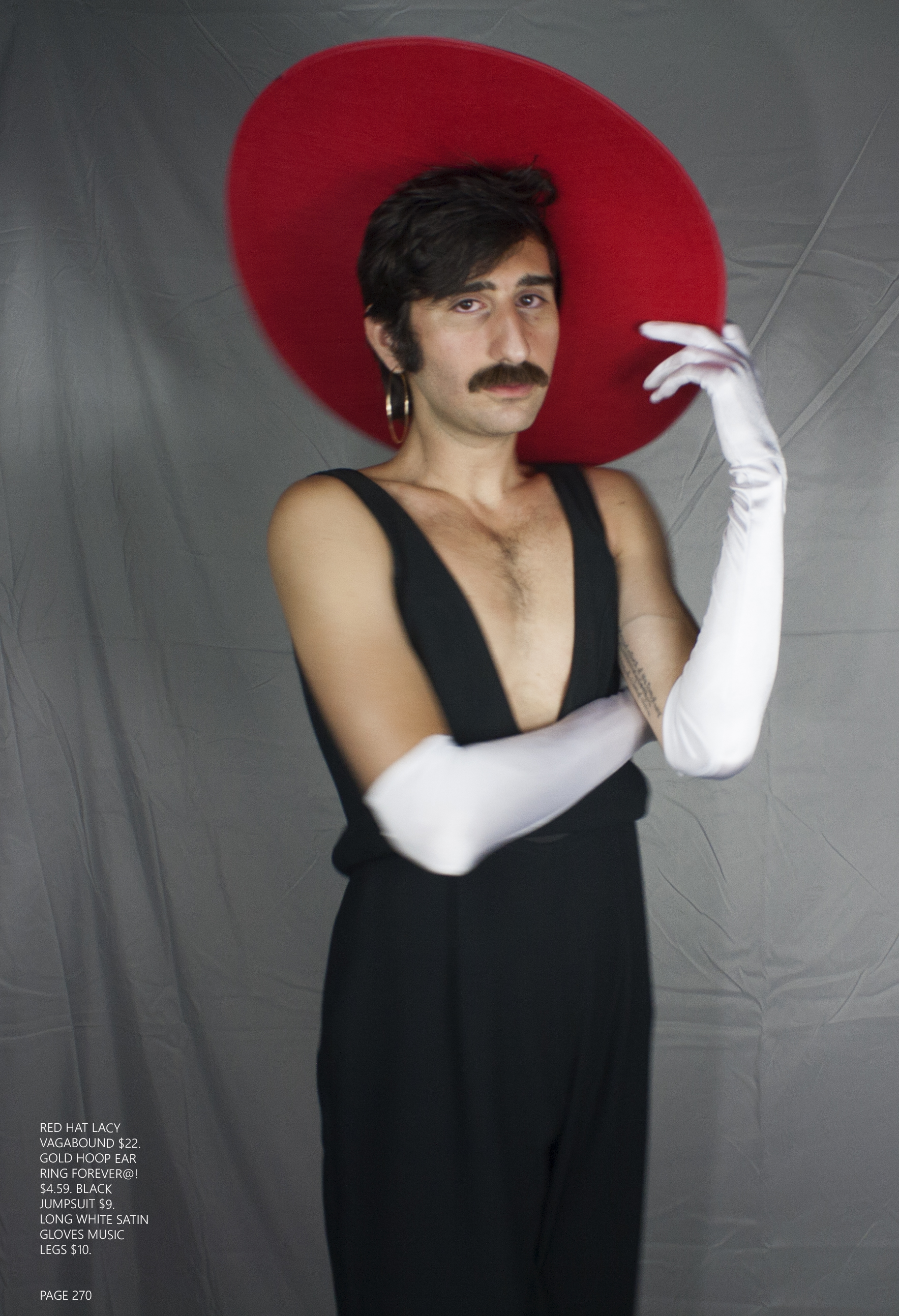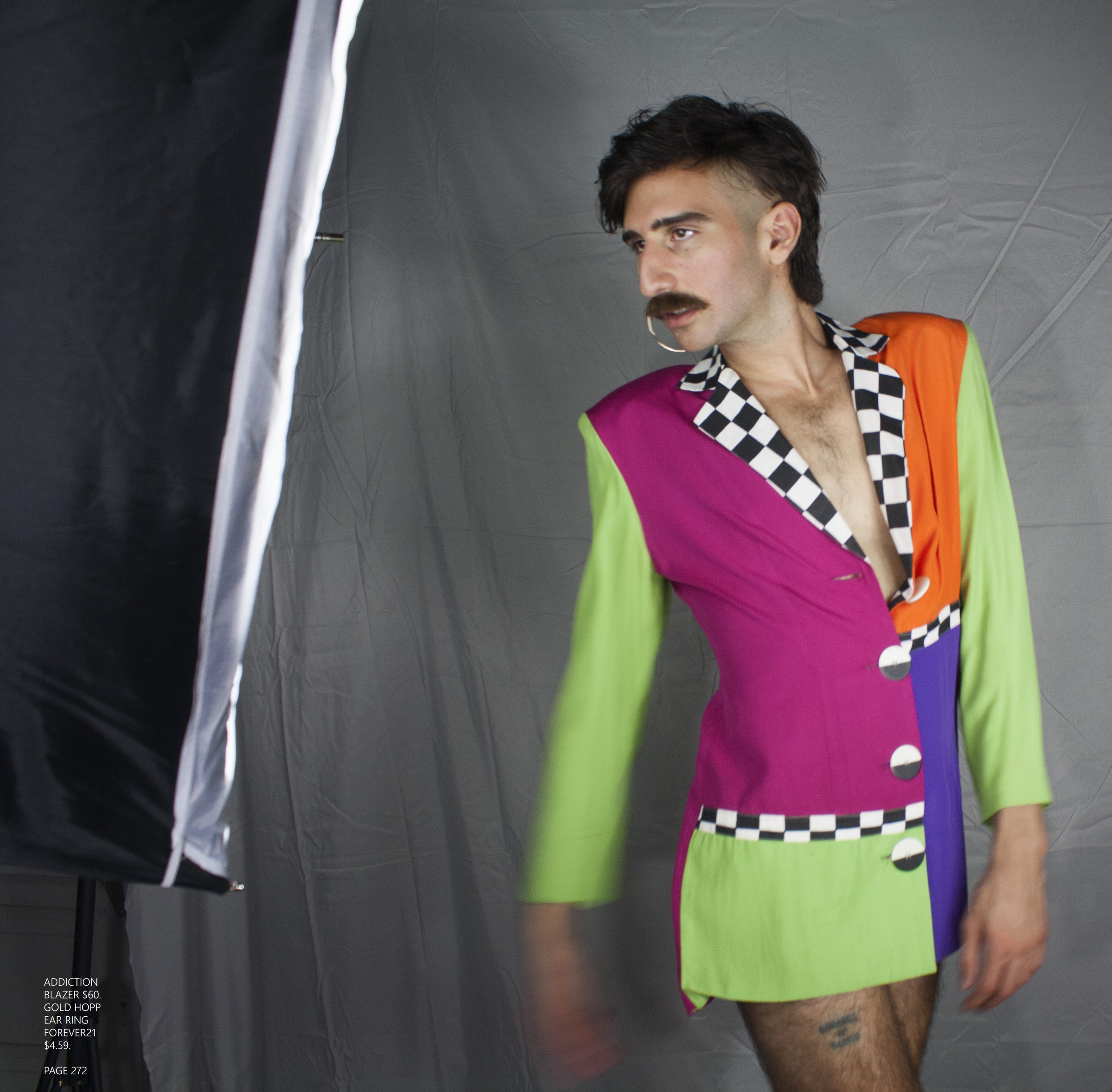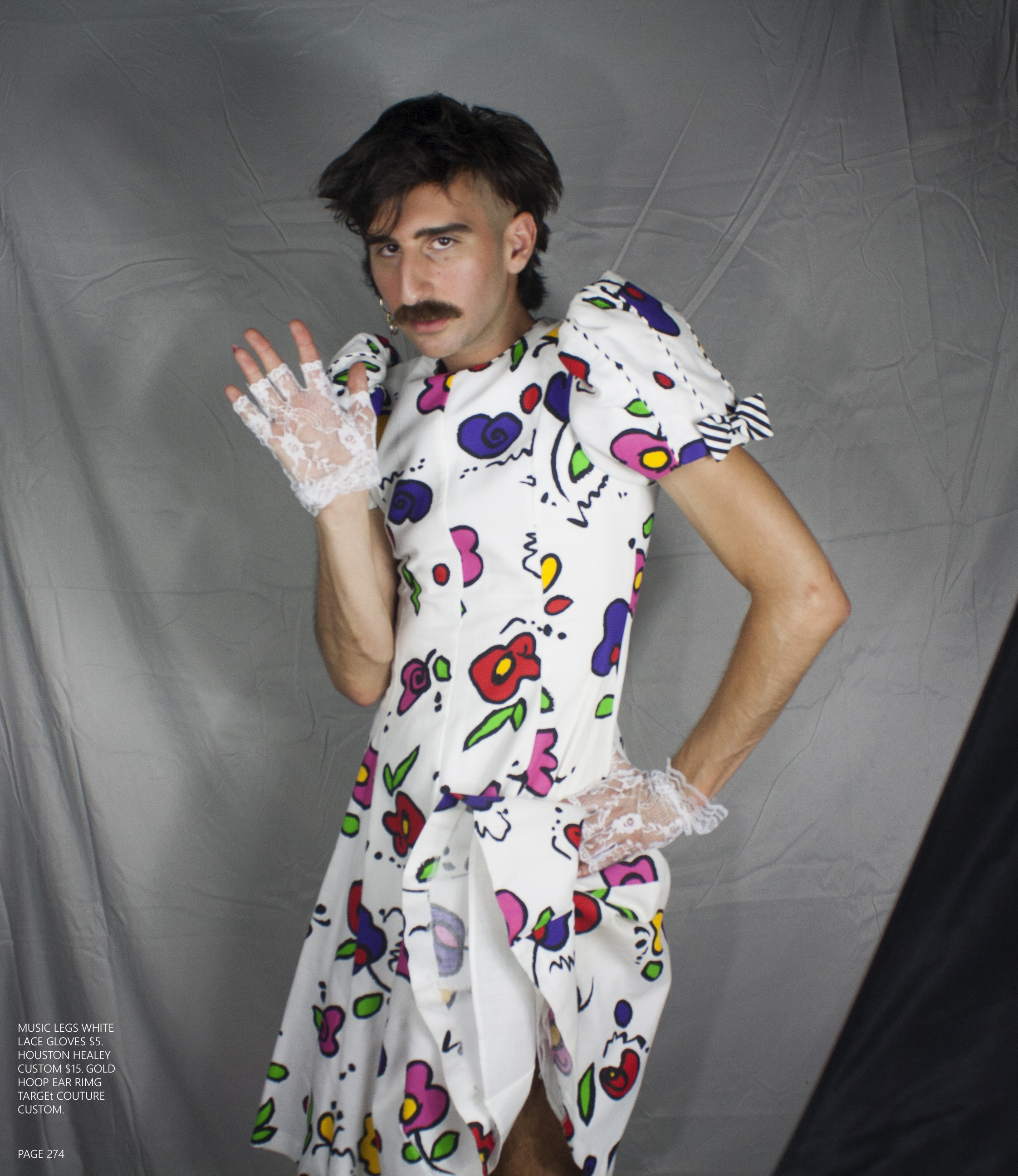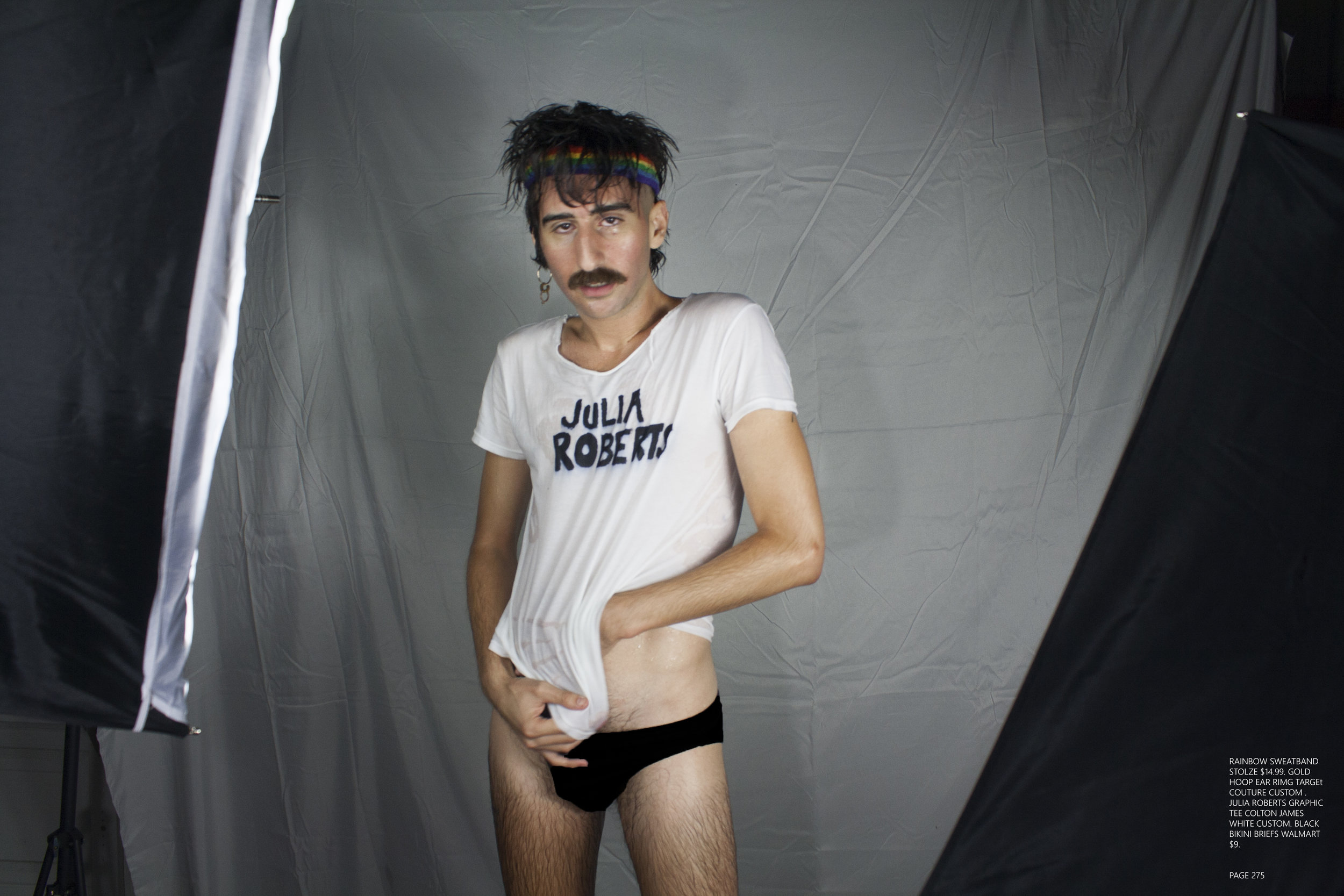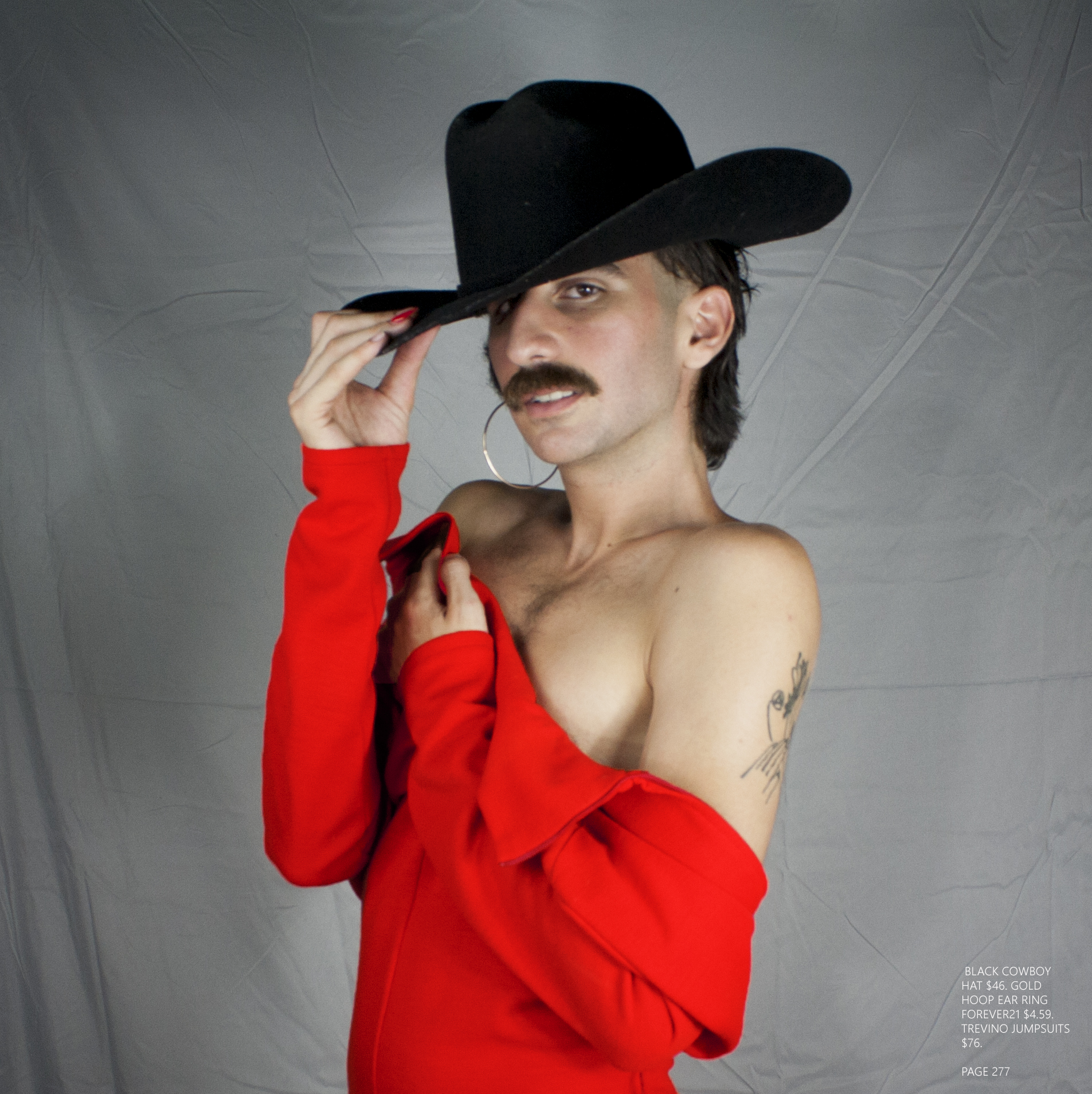Romantic Rodeo
An interview with performance artist, Colton White. In our conversation, Colton talks about his upcoming documentary/biopic which focuses on his perception of living in Dallas as a Texas queer all while roller skating around the city exploring the seven primary neighborhoods that Dallas has to offer through urban research and urban exploration.
Brittany Griffiths | 17 December 2018
photo by Colton White
"The year is 1973, and I am merely just a clown in this rodeo."
“I think that’s how I want to start it all off,” Colton White explains with excitement as he begins to layout the details of his latest project, a documentary/biopic that focuses on his perception of living in Dallas as a Texas queer all while roller skating around the city exploring the seven primary neighborhoods that Dallas has to offer through urban research and urban exploration. Colton is a performance artist living in Dallas, TX, and he is also one of this year’s winners of the Nasher Artist Microgrant. For the past four years, the Nasher Sculpture Center has awarded grants to exceptional North Texas artists in support of their artistic projects. Applicants are required to pitch their idea in 350 words or less, and those that make it past the preliminary phase must speak before a panel of judges to answer questions about their project. “It was the most intimidating thing I’ve ever done, but as an individual and an artist, I’m glad I had that opportunity of experiencing it.” Colton, who moved from Denton to Dallas in 2017 after graduating from UNT with a BFA in Studio Art in New Media and a focus on Performance Art, had heard about the grant during his time at UNT and from several other local artists, but he never felt compelled to apply until a close friend planted the seed in his head. This idea, a sort of second coming out, was one that Colton had been musing on for well over a year, and the prospect of winning a microgrant to help fund the documentary was just the kick-starter he needed to move from concept to production. This project will serve as the biggest and longest performance piece he has ever done. “What I love about performance is that you really don’t have to plan, you just live… I’m just expressing myself at a different elevation. I don’t see a difference between life and art. I guess that’s why I’m so fascinated with performance. There really is no separation.”
Colton, who grew up in the suburbs of Dallas, refers to himself as a ”North Texas Boy.” For most of his life, he’s carried around a certain perception of Dallas, and the metroplex as a whole, one he has been trying to flesh out for years. “My whole life I’ve always been saying I’m never going to live in Texas… obviously that didn’t happen I’m still here, but I want to make the best of it. So this past year I’ve just been a tourist and trying to understand the city that I’ve grown up in but know nothing about.” The above sentiment Colton speaks of has a certain resonating quality to it because it’s not uncommon, when speaking with other citizens in Dallas, to hear that they know little to nothing about the true history of the city. “I think Dallas has a big relationship to the ideologies of absence as presence. We’re building, removing, hiding all these things,” says Colton, and that theme is at the very heart of what he wants to explore in his documentary. “These ideas are coming up from walking and watching and absorbing it all… the biggest realization is that I don’t need to apply for a residency because where I’m living should be my residency.” Through play and urban exploration, approaching the city as a tourist has allowed him to integrate new ways of seeing and new ways of thinking about the space in which he lives. The city of Dallas has long been considered a transplant city, and in fact, its foundation was built upon just that – the success of the people who migrated here and made it their home; people with very distinct cultures. From the Jewish families who moved to Dallas and set up shop in Downtown and South Dallas to the rich and invigorating African American culture that built Deep Ellum to the thriving Hispanic heritage in Oak Cliff. Yet, despite the blooming individuality of these neighborhoods, they all fit together like little puzzle pieces around the center of the city. They were different, but they always felt like Dallas. “I want to be very true to the neighborhoods’ culture,” says Colton passionately, “I don’t want to appropriate or take anything away. I want to bring it up and show it.” The seven neighborhoods that Colton plans on highlighting in the documentary are:
1. Oak Cliff
2. Uptown/Oak Lawn
3. Design District
4. Downtown
5. Deep Ellum
6. The Cedars
7. Lower Greenville/East Dallas
“I also view Dallas as an amusement park, so that’s why I chose seven places... each neighborhood is so different but still has the same Dallas-y vibe to it. It just reminds me of Six Flags. I want to explore these places, and I want to bring light to what these areas are like, and [most importantly] how I can make it more playful.” This playful quality of exploration is distinctly shown in Colton’s choice of transportation on his journey through each neighborhood – roller-skating. Strongly influenced by films such as Xanadu and The Warriors, he wants to incorporate an element of camp into his documentary to give viewers the sense that learning about the city in which one lives can be a fun and exhilarating experience. Colton describes the relationship between roller-skating and urban exploration as thrilling, “I don’t go to rinks; I’m on the streets, tennis courts, Katy Trail, Swiss Avenue, any parking garage that will allow me.” In other words, he’s conducting research through experience by living his life in the public domain and playing a role in the environment that surrounds him. “I want to create the illusion that you are roller-skating with me, and I want you to be like – is this real life or is this fantasy – because that’s how I live my life.”
Bending the lines between reality and fiction is, and always has been, at the core of what it means to be a performance artist. Performance artists face the challenge of developing an ability to manipulate and play with their surrounding environment as well as learning how to seamlessly flow in and out of character all while maintaining a comfortability with the unexpected, allowing for the spontaneity of life to infiltrate their artwork. “Every little moment that happens through the process of making an artwork whether it be a conversation or you picking up dog shit can and will influence the piece,” he explains. In a sense, the work of a performance artist is never complete. This idea of composition in continual motion rings especially true for Colton, as he endlessly observes and absorbs the world around him, permitting every day life to influence his art. Though this notion of spontaneity is undoubtedly one of his biggest strengths as an artist, it has also created a hurdle for him to jump in terms of production on the documentary. When presenting his idea to the panel at the Nasher, Colton had to produce a detailed layout of what his documentary would look like, and, in doing so, had to figure out a way to create a framework that would allow for spontaneity. “I have to be so precise, but also true to myself... you've got to be yourself.”
Spontaneity and the unknown have functioned as major constituents in most of the pieces he has developed and performed over the years. Take for instance his piece, Hot Lips, a production he has put together and performed once a year since 2014. In Hot Lips, Colton takes a space (a different one each year) and transforms it by inserting a kissing booth – a scene constructed with one chair facing out toward the audience and the other chair facing away from, making his back the one point of visibility to onlookers. The only context that the participants are given consists of two individual passport photos with lipstick marks all over them. A cue card with instructions hangs adjacent to the booth, reading:
Enter the space
Sit down
Hand him/them the lipstick
He/they will apply the lipstick
Leave the space
Return to (escort/photographer)
Hot Lips forces people to confront and deal with their own inhibitions toward sexuality, and that is its greatest power – a sort of coming to terms with intimacy. Though Colton allows people to react to the situation in their own way, he does note a few instances where he has called people out who have responded in a hateful and harmful way. Hot Lips is much more than just an invitation for one to explore their level of comfortability with intimacy and sexuality, it invokes a sense of awareness in its participants by recreating the conflicts and interactions of every day life that occur on the streets. This concept of awareness is one that has bled into his upcoming documentary. “Do we choose to be aware?” Colton asks rhetorically. On a deeper level, his question seems to touch on the ever-present issue of inclusivity vs. exclusivity. Who is welcome and who isn’t – where, when, and why not?
For Colton, confronting issues like awareness, sexuality, and inclusivity is something he doesn’t shy away from; instead he embraces the disparity of life, continuously finding new and inventive ways to portray the dichotomy between the accepted and the other. His upcoming documentary will, again, do just that – provide audiences with a view through the looking glass on what it means to be queer in Texas and what it means to live within the realm of the other. It’s not difficult to see the passion that exists behind this project, a passion that has driven Colton to spend the majority of the year in perpetual exploration of not only Dallas, but of himself. “I’m going to be queer everywhere. You’re not going to stop me.”
Filming for Colton's upcoming documentary is scheduled to begin sometime in Spring 2019, but in the meantime, you can follow his progress and explore Dallas with him by following him on social media at the links below.
All the photos in this article were taken by Colton White, who came up with the brilliant idea of putting together a faux-Vogue photo shoot as a complimentary piece to this article. The photo shoot functioning as a performance piece in and of itself.
Connect With Colton White
Brittany Griffiths is a writer from Dallas, Texas. She is the founder and editor of Spontaneous Afflatus, an independent publishing house that specializes in poetry and short story collections, and she is also the editor of Wavelength Magazine. Her debut collection of poetry titled, Ebb & Flow, was released in 2018. She currently works as the publishing specialist for Mavs Open Press at the University of Texas at Arlington libraries.
Connect with Brittany:


